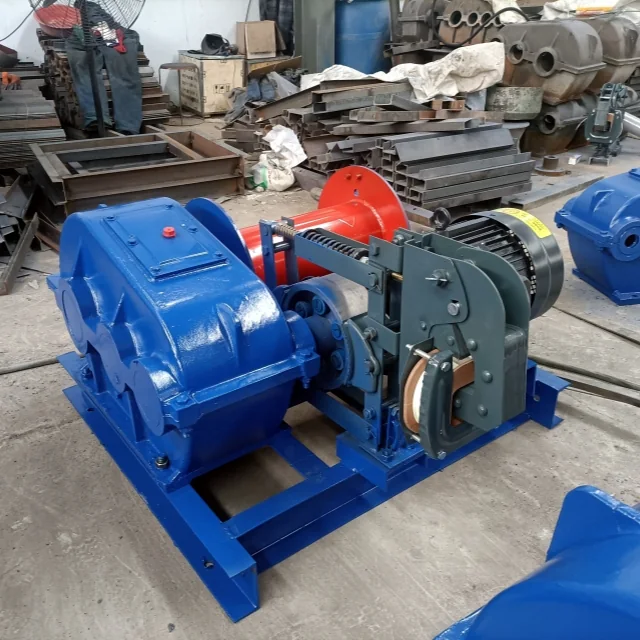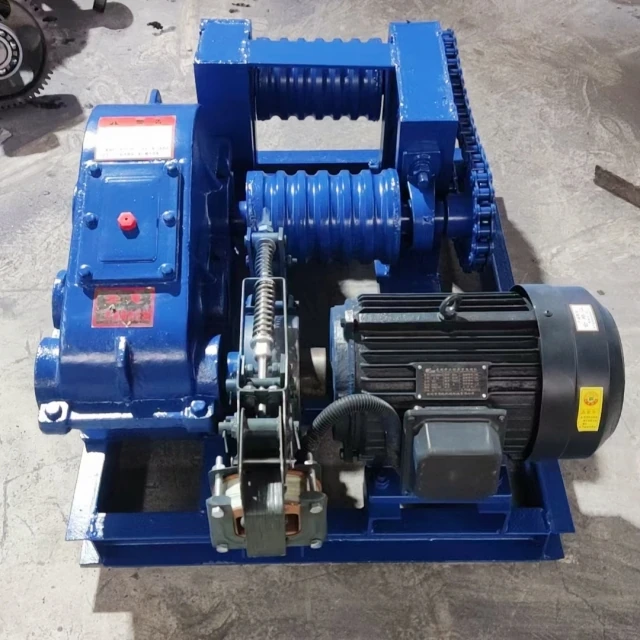When industrial efficiency and safety are non-negotiable, winches emerge as unsung heroes. From lifting multi-ton mining equipment to stabilizing bridges during construction, these robust tools solve mission-critical challenges. This guide explores how specialized winch applications drive productivity while mitigating risks in high-stakes environments.
Winches in Heavy Industries: Functionality and Impact
Mining: Underground Material Handling and Safety
Winches are the backbone of underground mining operations, transporting ore, machinery, and personnel through confined spaces. Safety protocols are paramount:
- Load Monitoring Systems: Prevent overloads with real-time capacity tracking (e.g., Garlway winches integrate sensors that trigger automatic shutdowns when exceeding thresholds).
- Emergency Stops: Immediate halt functions mitigate accidents during cable-guided transport.
- Operator Training: Only certified personnel should handle winches, with strict checks on wire integrity and secure connections.
Did you know? A single kinked strap can reduce a winch’s load-bearing capacity by 40%. Regular inspections are mandatory.
Construction: Precision Lifting and Load Management
In skyscraper projects or prefab installations, winches enable millimeter-accurate positioning. Key advantages include:
- Controlled Speed: Hydraulic models offer variable speeds for delicate placements.
- Adaptability: Modular designs allow integration with cranes or standalone use.
Infrastructure Development with Winch Technology
Road and Bridge Construction: Cable Tensioning and Slope Stabilization
Hydraulic winches dominate here due to:
- Continuous Duty Cycles: Unlike electric winches, they won’t overheat during prolonged tensioning of suspension cables.
- Harsh Environment Resilience: Waterproof and dustproof builds (like Garlway’s marine-grade units) withstand rain, mud, and saltwater.
Pro Tip: For slope stabilization, winches with synthetic ropes reduce corrosion risks versus steel cables in wet conditions.
Hydroelectric Projects: Turbine Installation and Maintenance
Installing a single turbine rotor—often weighing 300+ tons—requires winches with:
- Submersible Capability: Hydraulic systems operate underwater during dam repairs.
- Precision Synchronization: Multiple winches work in unison to lower components without misalignment.
Specialized Applications in Niche Sectors
Metallurgical Operations: Molten Material Transport
Winches handling molten metal must resist extreme heat (1,200°C+) and sparks. Solutions include:
- Ceramic-Coated Cables: Withstand thermal radiation.
- Remote Controls: Operators maintain safe distances from ladles.
Chemical Industry: Hazardous Environment Compliance
In explosive atmospheres, winches with:
- Intrinsic Safety Designs: No electrical sparks during operation.
- Corrosion-Resistant Frames: Stainless steel or aluminum bodies endure acidic fumes.
Conclusion: Matching Winch Capabilities to Your Industry’s Demands
Whether it’s a mining company needing failsafe load handling or a bridge team prioritizing uninterrupted hydraulic power, selecting the right winch hinges on:
- Environment: Harsh conditions demand specialized materials (e.g., submersible or heat-resistant).
- Duty Cycle: Continuous operations require hydraulic models; intermittent tasks may suit electric.
- Safety: Load monitors and emergency stops are non-negotiable.
For industries where downtime isn’t an option, Garlway winches deliver the rugged reliability your projects demand—without compromising on operator safety.
Ready to optimize your heavy lifting operations? Explore how tailored winch solutions can transform your workflow’s efficiency and safety margins.
Related Products
- Electric and Hydraulic Winch for Heavy Duty Applications
- Best 18000 Pound Drum Anchor Trailer Winch
- Commercial Construction Mixer Machine for Soil Cement Mixing Concrete
- Small Electric Winch 120V and 240V for Compact Applications
- 12000 lb Heavy Duty Electric Boat Winch
Related Articles
- How to Choose and Safely Operate Winches for Construction Efficiency
- How Winch Design Powers Reliability and Adaptability in Demanding Environments
- How to Choose the Right Winch for Heavy-Duty Applications: A Scenario-Based Guide
- Hydraulic Winches: When Heavy-Duty Power Justifies the Investment
- How Electric Winch Components Dictate Performance and Durability


















